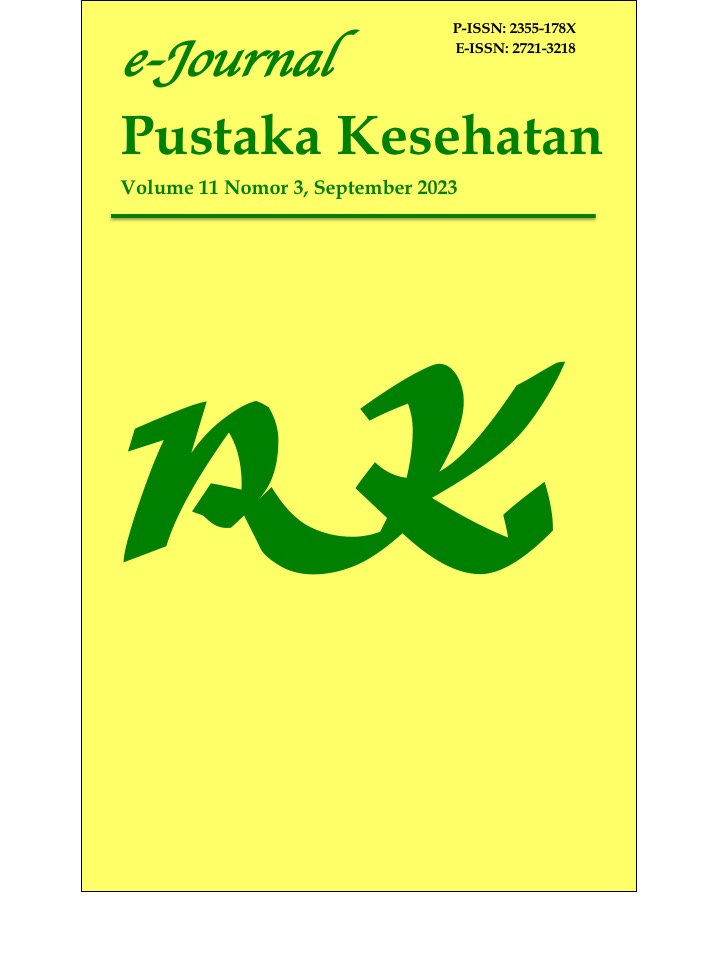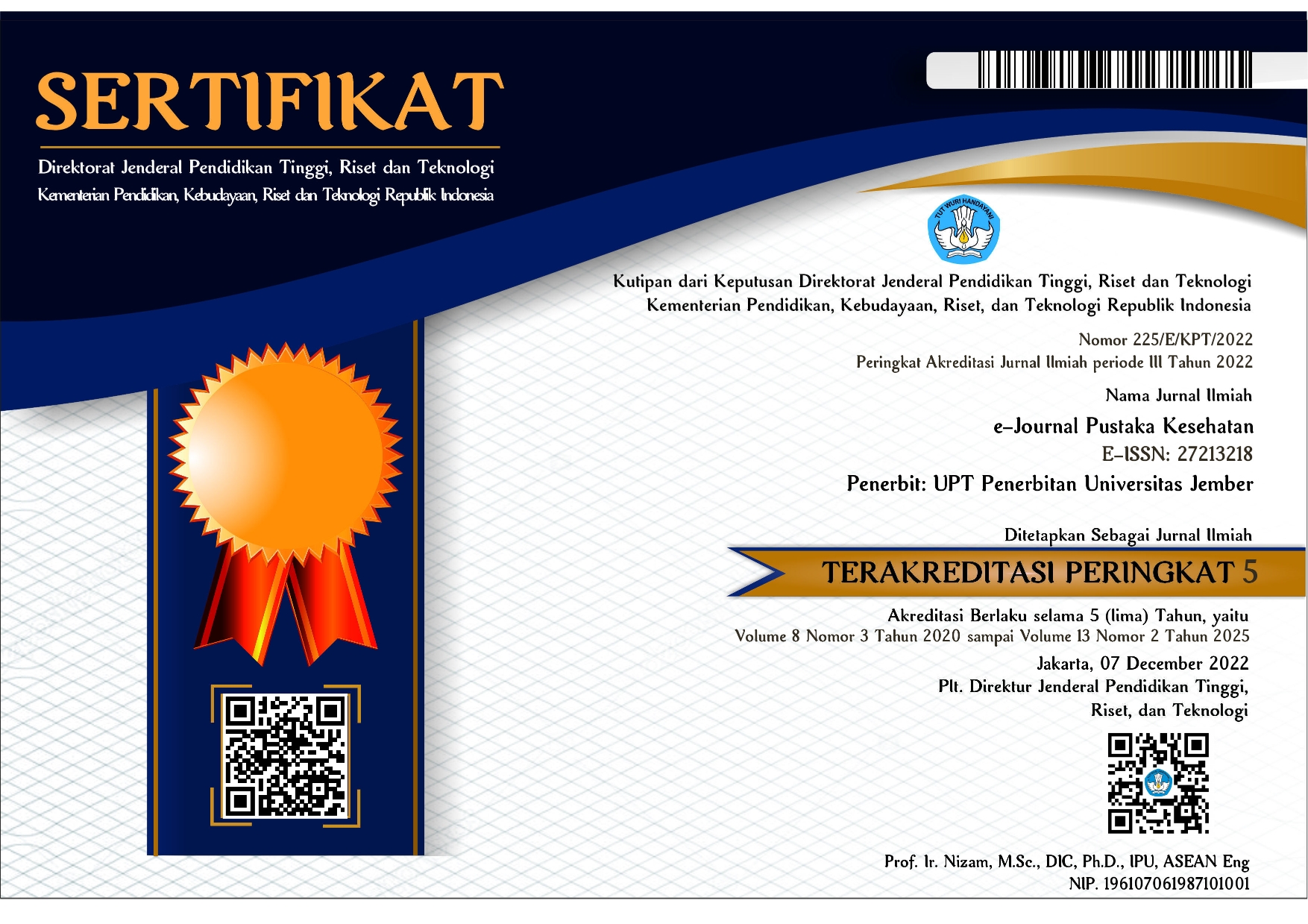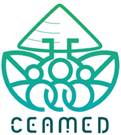Evaluasi Penggunaan Antibiotik pada Pasien Dewasa Rawat Inap di Puskesmas Sumbersari Jember dengan Metode ATC/DDD 2018
DOI:
https://doi.org/10.19184/pk.v11i3.16616Keywords:
antibiotics;, adult, ATC/DDD, 100 patient daysAbstract
Antibiotics are the most widely used drugs for bacterial infectious diseases. Irrational use of antibiotics affects the increase in morbidity and mortality, resistance, and cost burden. One method that can be used to overcome the problem of resistance is to evaluate the use of antibiotics. This study aims to evaluate the use of antibiotics in the Sumbersari Puskesmas in 2018 which was conducted quantitatively using the ATC / DDD (Anatomical Therapeutic Chemical / Defined Daily Dose) method. This study uses a cross-sectional descriptive study with retrospective data on adult patients undergoing hospitalization. Data on antibiotic use was obtained from 455 medical records for the 2018 period. Data taken included patient profiles, diagnosis, and antibiotic prescribing. The quantity of antibiotic use was calculated by the DDD 100 patient-days formula and analyzed descriptively. The results showed that the disease most commonly suffered by adult patients was typhoid (30.5%). Besides, there are 7 types of antibiotics prescribed with a total DDD value of 36.93 DDD / 100 patient-days. The highest DDD value is ceftriaxone with a DDD value of 16.90 DDD / 100 patient-days.
Downloads
References
[2] WHO. 2019. Guidelines for ATC Classification and DDD Assignment 2019’. 22nd ed. Norway: WHO Collaborating Centre for Drug Statistics Methodology.
[3] Pemerintah Kabupaten Jember. 2016. 39 Buku Profil Kesehatan Kabupaten Jember 2016 Profil Kesehatan Jember 2016.
[4] Rakhman, Arief et all. 2009. Faktor – Faktor Risiko Yang Berpengaruh Terhadap Kejadian Demam Tifoid Pada Orang Dewasa. Berita Kedokteran Masyarakat 25 (4): 167-175
[5] Mahmudah, Febrina et al. 2016. ‘Study of the Use of Antibiotics with ATC/DDD System and DU 90% in Digestive Surgery in Hospital in Bandung’. Indonesian Journal of Clinical Pharmacy 5(4): 293–98.
[6] Nurmala, IGN Virgiandhy, Andriani, F Delima. Liana. 2015. Resistensi dan Sensitivitas Bakteri terhadap Antibiotik di RSU dr. Soedarso Pontianak Tahun 2011-2013. Resistensi dan Sensitivitas Bakteri. 3(1): 21-28
[7] Huovinen, P., L. Sundstrom, G. Swedberg, and O. Skold. 1995. ‘Trimethoprim and Sulfonamide Resistance’. Antimicrobial Agents and Chemotherapy 39(2): 279–89.
[8] Guy H. Palmer. 2013. ‘Antimicrobial Resistance: A Global Public Health Challenge Requiring a Global One Health Strategy’. NAM Perspectives 3(2).
[9] Hadi, Usman. 2013. ‘Indonesian Journal of Tropical and Infectious Disease.’ Indonesian Journal of Tropical and Infectious Disease 4(4): 5–8.
[10] Kementerian Kesehatan RI. 2016. Keputusan Menteri Kesehatan Republik Indonesia Nomor 364/Menkes/Skn/2006: Pedoman Pengendalian Demam Tifoid. Jakarta: Kementerian Kesehatan RI.
[11] Katzung, Betram G et all. 2012. Basic and Clinical Pharmacology 12th Edition. California: The McGraw-Hill Medical
[12] Lawson, Keith A., Jan K. Rudzinski, Ingrid Vicas, and Kevin V. Carlson. 2013. ‘Assessment of Antibiotic Prophylaxis Prescribing Patterns for TURP: A Need for Canadian Guidelines?’ Canadian Urological Association Journal 7(7–8): 530.
[13] Al-Tawfiq, Jaffar A. 2012. ‘Changes in the Pattern of Hospital Intravenous Antimicrobial Use in Saudi Arabia, 2006–2008’. Annals of Saudi Medicine 32(5): 517–20.
Downloads
Published
Issue
Section
License
e-Journal Pustaka Kesehatan has CC-BY-SA or an equivalent license as the optimal license for the publication, distribution, use, and reuse of scholarly work. Authors who publish with this journal retain copyright and grant the journal right of first publication with the work simultaneously licensed under a Creative Commons Attribution-ShareAlike 4.0 International License that allows others to share the work with an acknowledgment of the work's authorship and initial publication in this journal.







